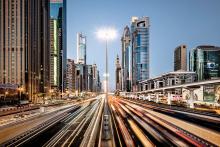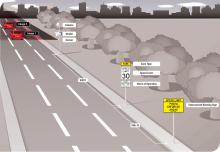Hyderabad, the capital and largest city of the southern Indian state of Andhra Pradesh, is implementing a smart traffic management system, H-TRIMS (Hyderabad Traffic Integrated Management System), at 221 intersections in the city. The new signalling system uses high-intensity LED traffic signals, countdown timers, solar power battery backup facility, directional signboards and footpath railing, among other amenities. For the first time, pedestrian crossing signals will also be implemented, with an audible
Hyderabad, the capital and largest city of the southern Indian state of Andhra Pradesh, is implementing a smart traffic management system, H-TRIMS (Hyderabad Traffic Integrated Management System), at 221 intersections in the city.
The new signalling system uses high-intensity LED traffic signals, countdown timers, solar power battery backup facility, directional signboards and footpath railing, among other amenities. For the first time, pedestrian crossing signals will also be implemented, with an audible signal to alert pedestrians.
“We are using latest 32-bit controllers which also permit manual control of signals in all directions along with area traffic control system and synchronisation,” said deputy commissioner of police (Traffic) C V Anand. He explained that each junction would have pre-programmed signal timing tables. Depending upon the density of traffic in various directions at different timings during the day, signal timing tables will be configured into the traffic signal controller. He said that around 290,000 new vehicles were added to the city’s increasing traffic in the last year and hoped that motorists’ problems would be solved with the installation of latest technology traffic signals.
The new signalling system uses high-intensity LED traffic signals, countdown timers, solar power battery backup facility, directional signboards and footpath railing, among other amenities. For the first time, pedestrian crossing signals will also be implemented, with an audible signal to alert pedestrians.
“We are using latest 32-bit controllers which also permit manual control of signals in all directions along with area traffic control system and synchronisation,” said deputy commissioner of police (Traffic) C V Anand. He explained that each junction would have pre-programmed signal timing tables. Depending upon the density of traffic in various directions at different timings during the day, signal timing tables will be configured into the traffic signal controller. He said that around 290,000 new vehicles were added to the city’s increasing traffic in the last year and hoped that motorists’ problems would be solved with the installation of latest technology traffic signals.









